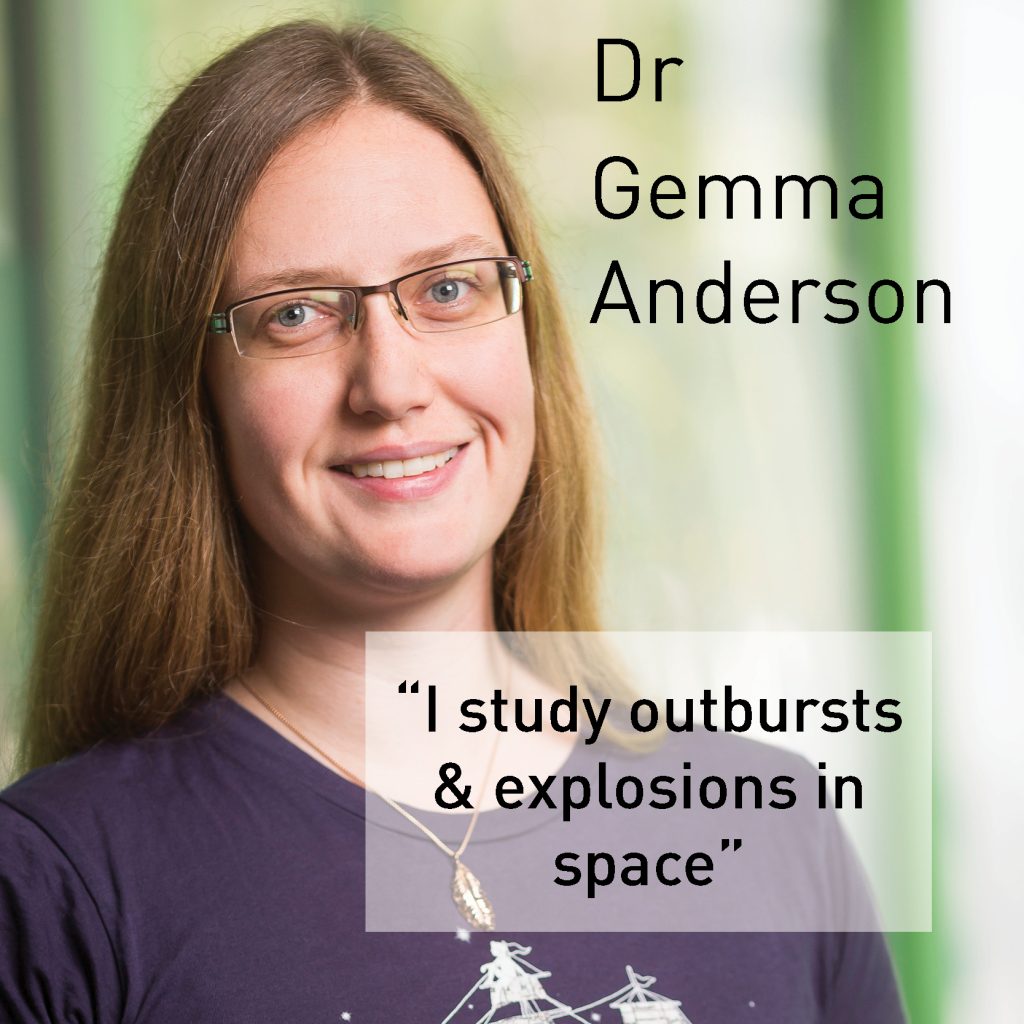“I study explosions & outbursts in space.”
Dr Gemma Anderson’s research uses radio telescope arrays on Earth to observe explosions in space.
“It’s only with radio telescopes that we can really understand the environments these explosions are occurring in. We can actually learn about the gas, dust and magnetic fields that surrounds them.”
Dr Anderson explains that when an explosion goes off in space, it’s detected by space satellites like Swift, and its coordinates are sent to Earth. Both the MWA and the Australia Telescope Compact Array (ATCA) will automatically stop what they’re doing, and robotically repoint to observe the explosion as soon as it happens.
“What I’m actually interested in is the very earliest radio signals produced by these explosions.”
As well as conducting her own research, Dr Anderson also collaborates with astronomers around the globe including those using MeerKAT in South Africa. She enjoys working with other astronomers, including those observing in optical and X-rays, to achieve exciting results.
“In 2016 a great paper was published in Science, studying radio emission from a tidal disruption event – when a supermassive black hole at the centre of a galaxy actually consumes a star over the course of months, weeks even.”
Dr Anderson says it’s really awesome to study these events as they show the supermassive black hole evolving on human timescales rather than over millions of years like they normally do.
“As a transient astronomer, I don’t actually have a favourite explosion type. I’m working on gamma-ray bursts now, but I also work on outbursting black holes, supernovae, and flare stars. You could be waiting 11 months for an explosion to go off, then they all go off in one month.”
